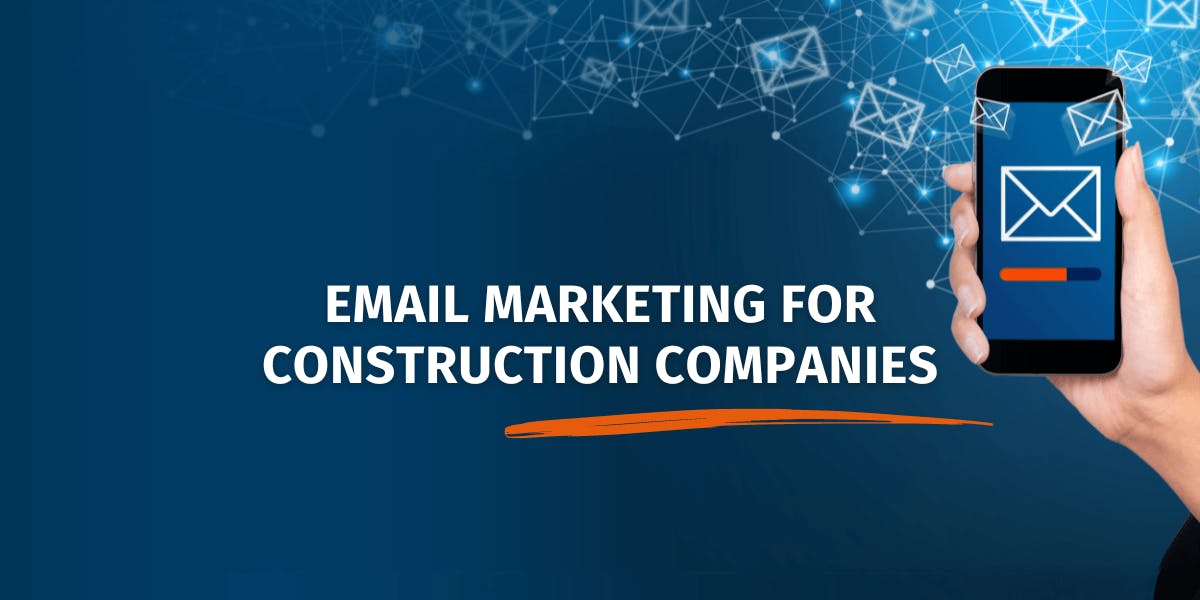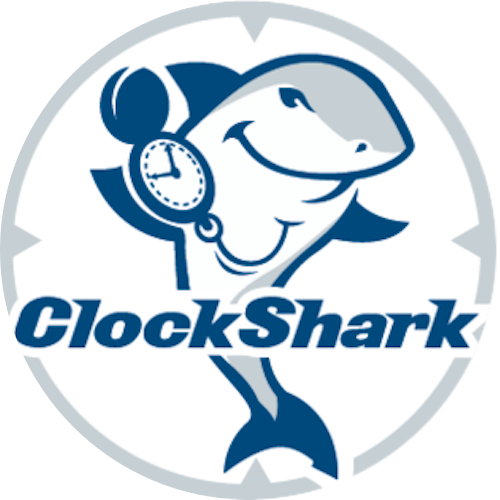Get more clients, increase brand recognition, and earn customer loyalty by adding email marketing into your marketing strategy.
What is email marketing for construction trades?
With an impressive ROI of 36:1 (or $36 return for every $1 spent), email marketing has become a focal point for many construction companies looking for effective reach at a reasonable price. Email not only stands as a reliable channel for marketers, but it's ultimately one of the best ways for companies to maintain active, ongoing, one-to-one communication with prospects and customers.
Here are some important email marketing stats to consider:
- 99% of email users check their accounts every day
- 58% of email users check their accounts first thing in the morning
- On average, professionals check their emails 15 times a day
- 59% of B2B marketers said that email is their top channel for revenue generation
With these stats, it’s fair to say that you’re likely leaving money on the table if you don’t utilize email as an additional way to promote your construction business.
Why is email marketing effective for construction trades?
Stay connected with your clients
Email marketing, with a legacy spanning over 50 years, continues to prove its lasting stake in the digital marketing game. Companies continue to prioritize email for client communication due to its reliability and the control it affords. Unlike modern digital channels influenced by algorithms (Facebook, Instagram, etc.), emails offer a direct line to customers, minimize the risk of messages going unseen. This means that by adhering to best practices and delivering quality content, emails can consistently reach the intended audience's inboxes, ensuring uninterrupted communication.
Share valuable and informative content
When it comes to coming up with content to deliver through email, you always want to make sure that your content is timely, targeted, and contains valuable information for the reader. Coming up with an email marketing strategy that provides your audience with resourceful content that helps them live their lives better or do their jobs better will ensure that your emails get opened and read.
Build brand awareness for your company
One of the initial missteps companies often make in email marketing is not using this channel correctly or neglecting it altogether. Don't let fears of low open rates or potential unsubscribes keep you from sending out email campaigns. Your primary objective should be securing placement in the inbox. While it is commonly believed that the effectiveness of email hinges on its open rate, the reality is that even unopened emails can play a meaningful role in building brand awareness. Every email reaching a client or prospect's inbox is an opportunity to strengthen your brand presence. A company with a small email list that sends valuable content weekly is far more effective at building brand awareness than a company that has a large list but sends emails sporadically.
Promote special offers
Anyone who subscribes to your list usually does so for a few select reasons:
- They want to stay in touch with your brand
- They want to be updated on what’s new
- They want to know when a product or service that you sell is available
- They want to know about sales of your products or services
Using email marketing as a way to promote your special offers provides extra value to your subscribers. While it’s not a best practice to only send emails about sales and promotions, it is a good strategy to occasionally share news about ongoing sales and allow your subscribers to benefit from exclusive limited-time opportunities.
How to get started with email marketing
Before you begin your email marketing strategy, there are a few items on your to-do list that you will have to tackle. Setting clear goals and devising a strategy enhances your efforts' effectiveness and facilitates easy tracking of successes and areas for improvement. Let's explore the essential steps to kickstart your email marketing strategy.
Step 1: Set up a goal
Setting achievable and incremental goals is crucial for a successful email marketing strategy. Use the S.M.A.R.T. method to carefully craft out your objective. Beginning with modest targets ensures a realistic starting point for growth. It's helpful to refer to benchmark reports, like Hubspot's industry-specific data, to align your goals with realistic expectations as you navigate the early stages of email marketing.
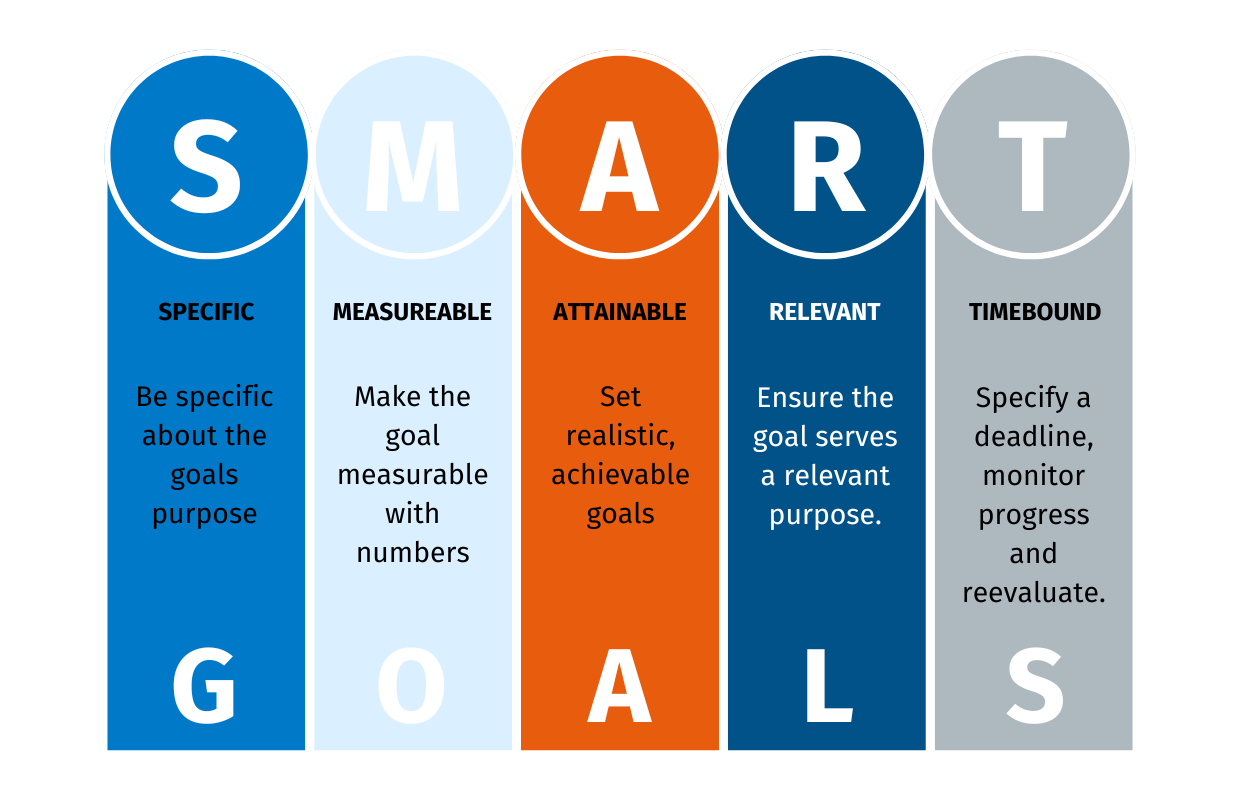
Step 2: Build a quality email list
Building an email list from scratch might appear challenging, but once you’ve identified who your target audience will be, it becomes much easier to think about how to get and keep them on your list. In order to find new subscribers, you will first need to work on your top-of-funnel marketing activities, such as SEO, which helps you find people searching for problems that you may solve. Once you get visitors to your website, you will want to collect their email addresses before leaving.
There are a few ways you can get emails from new prospects. In exchange for your prospect’s email, you can:
- Promise weekly tips or deliver a FAQ newsletter.
- Create free guides and premium content, like a 30-page guidebook on the year's biggest renovation trends.
- Provide a free quote or free estimate
When it comes to list building, make it easy to subscribe, get full and proper consent, and clearly communicate what the new subscriber is signing up to receive.
Step 3: Identify your target audience segments
While sending out your newsletter to everyone on your list might seem straightforward, this approach is no longer effective. Given the numerous distractions and decreasing attention spans, it's even more essential to send targeted and relevant emails.
Begin by dividing your audience into segments or groups of people that may share a common interest, behavior, or end goal. For example:
- Customers
- Free Estimate Requests (Hot Leads)
- Blog Subscribers (Cold Leads)
Or you can group them by type of customer:
- Residential
- Commercial
Regardless of how you segment your audience, ensure that your messages are relevant and specific to each group. For example, it may be acceptable to send emails to your Residential audience on weekends, while sending weekend emails to your Commercial audience may not prove to be as effective.
Step 4: Craft compelling content
When it comes to content creation, you want to think about your emails as having three critical parts.
- The subject line
- The body or main message
- The call to action (or CTA)
Creating compelling subject lines
Your email subject line makes the initial impression on your audience. A compelling subject line can encourage the recipient to open your email, while a dull one might lead to deletion without consideration.
Make the subject line interesting, and add elements that spark curiosity (e.g., Sneak Peek: The Construction Industry Shift You Never Saw Coming!). You can also consider using emojis to make your subject lines stand out in the crowded inbox.
Crafting clear and concise messaging
The content inside your email is just as important as the subject line, which entices the reader to open it. The body of your email can consist of pure text or a blend of images and text. If using text, break paragraphs into easily digestible chunks. For emails with a mix of images and text, ensure the images contribute to the narrative — the saying "a picture is worth a thousand words" holds true for emails. You can also use GIFSs for added humor and engagement.
Encourage clicks with a persuasive call to action
To guide subscribers through your funnel, it's imperative to prompt action through compelling calls to action (CTAs). A well-crafted CTA communicates precisely what you desire from your reader. Make it stand out by leveraging CTA buttons available in your design editor or by strategically hyperlinking your key text. The goal is to seamlessly lead your audience to the next step in their journey.
5 Email marketing mistakes you don't want to make
#1 Not segmenting your list
The term ‘email blast’ is a thing of the past. Modern email marketing best practices emphasize the importance of segmenting your email list and sending targeted, relevant messages to specific audiences. This approach boosts engagement rates and provides better visibility into key target demographics.
#2 Not giving an easy way to unsubscribe
It may be tempting to bury your unsubscribe button or not to include one at all, but whatever you do, don’t make this mistake. Make sure your unsubscribe link is visible and clear. There's no need for creativity here; a simple "unsubscribe" text hyperlinked to the unsubscribe page suffices. Making it difficult to unsubscribe harms your brand reputation, as readers may resort to marking your emails as spam. Considering Google and Yahoo's stricter email requirements in February 2024, noncompliance in this area is something you want to avoid.
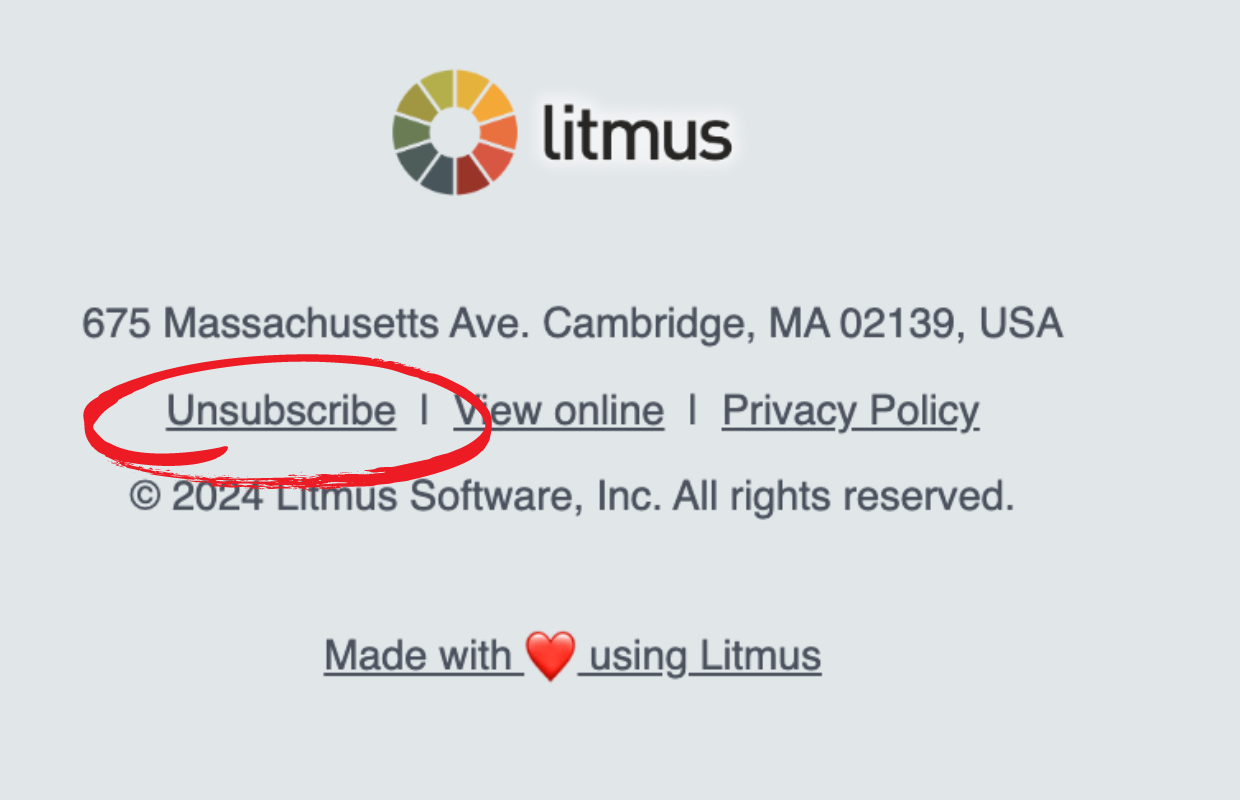
#3 Not sending a welcome email
Have you ever eagerly subscribed to a company's email list only to be met with silence? A prompt welcome email not only confirms one’s subscription but sets the stage for the type of content or offers one can expect. Unfortunately, some companies miss this critical step, and new subscribers might receive an email weeks later, leaving them puzzled and possibly forgetting why they signed up in the first place.
Automation is the most effective and efficient approach to sending welcome emails. Virtually all of the top email marketing platforms provide a built-in ‘Drip’ campaign or automated email builder. Your welcome email series should start with an introductory email sent immediately to the recipient. This initial email is pivotal—it greets the subscriber, outlines the type of content they can expect, and establishes the frequency of communication. It’s a best practice to welcome your subscribers over a period of one to two weeks with 3-5 emails. This gradual introduction serves to familiarize subscribers with your brand and brings them up to speed. Don’t skip the welcome email; it sets the stage for your readers.
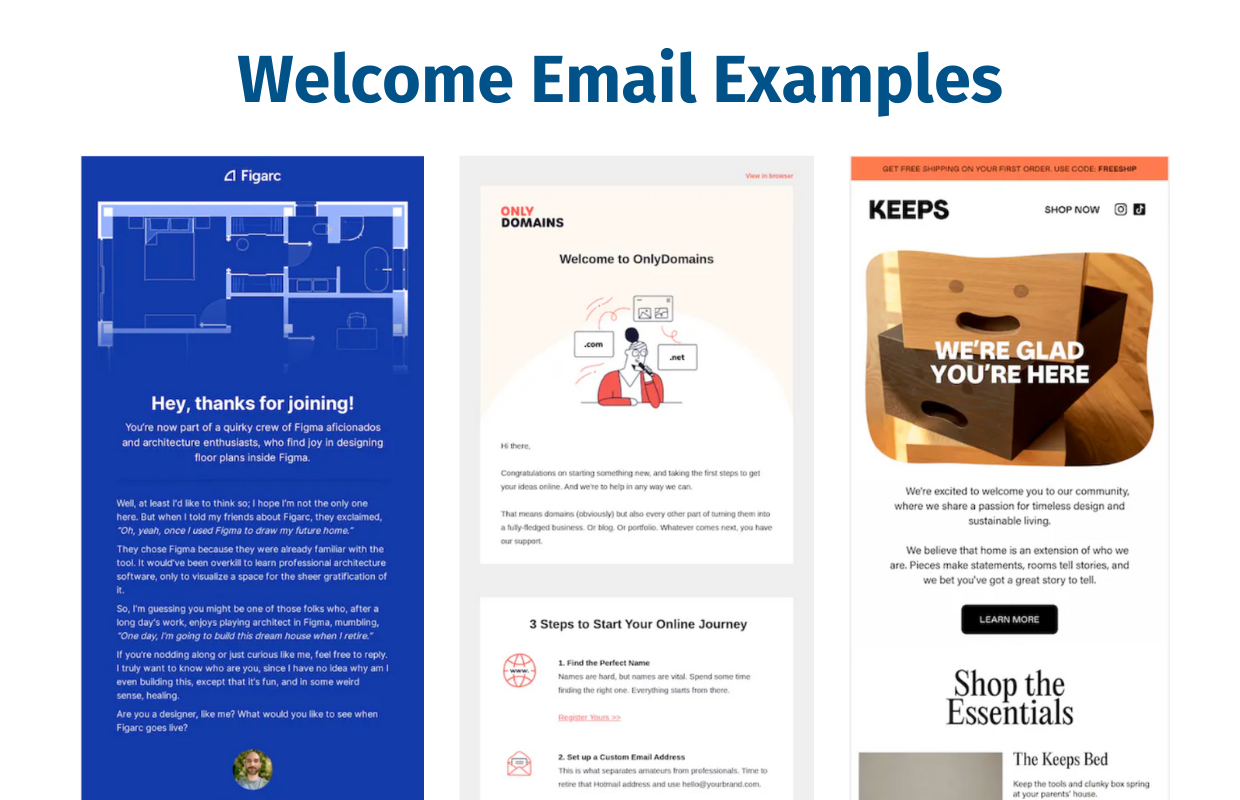
#4 Not having a clear call to action
We emphasized earlier the necessity of having a compelling call to action). Now, let’s talk about how many CTAs you should have. Balance is important in this area. Too many CTAs or unclear ones can discourage engagement with your brand. Aim for a single main CTA to streamline the focus. If your email features multiple promotions or topics, assign one primary color to the main CTA button and have a complementary sub-primary color for additional CTAs. This strategic approach enhances clarity and encourages meaningful clicks.
#5 Leaving email as an afterthought
One of the biggest mistakes that many construction companies make is leaving email marketing as an afterthought. Thinking that you will just whip up an email whenever it comes to mind or only when you have something to showcase will lead you to miss out on all the benefits that come from a well-thought-out email marketing strategy. Develop a strategy, come up with a theme and frequency, and create a calendar to keep consistency. Having a plan for your email will make the process more enjoyable, more fun and will ultimately bring in more revenue for your company.
Final thoughts
In conclusion, integrating email marketing into your construction company's strategy can significantly enhance your client base, boost brand recognition, and foster customer loyalty. With that impressive ROI of 36:1 and the ability to maintain direct, ongoing communication with your audience, email marketing emerges as a powerful tool for construction trades. Embrace a strategic approach, and watch your email marketing efforts become a key driver of success for your construction business.
For more revenue-boosting opportunities for your construction business, check out our list of best time-tracking apps for construction trades.




